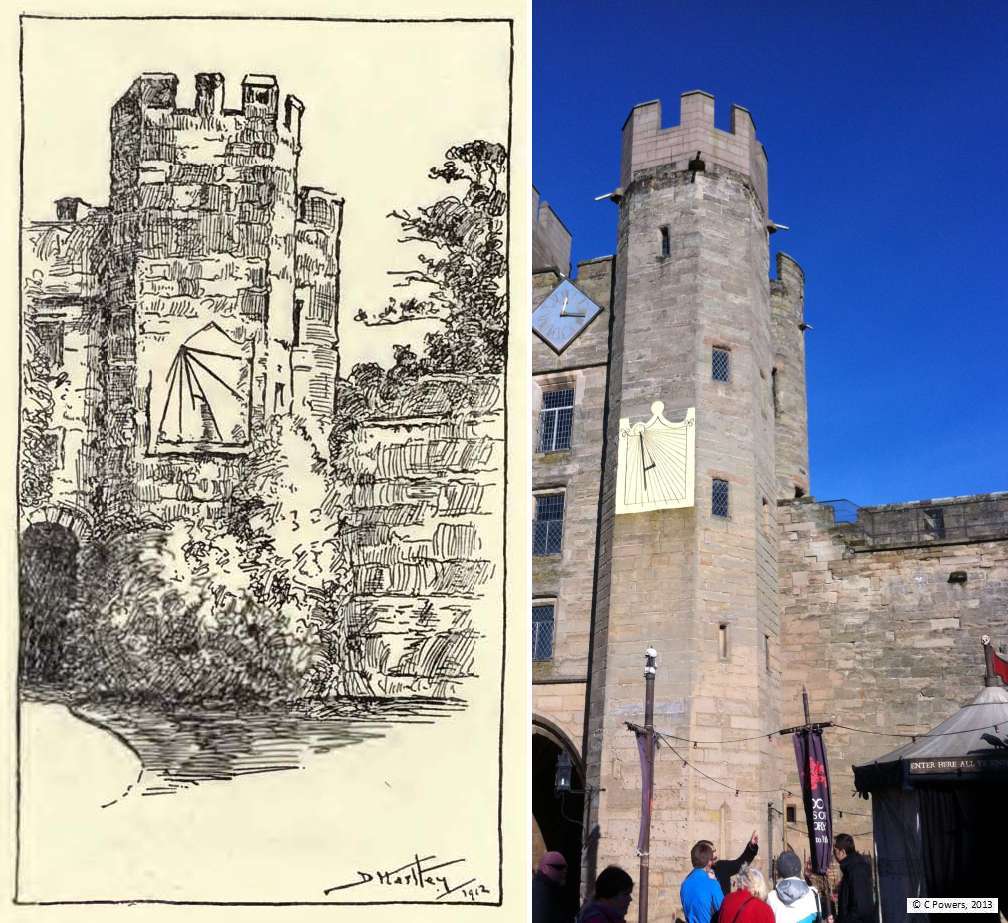
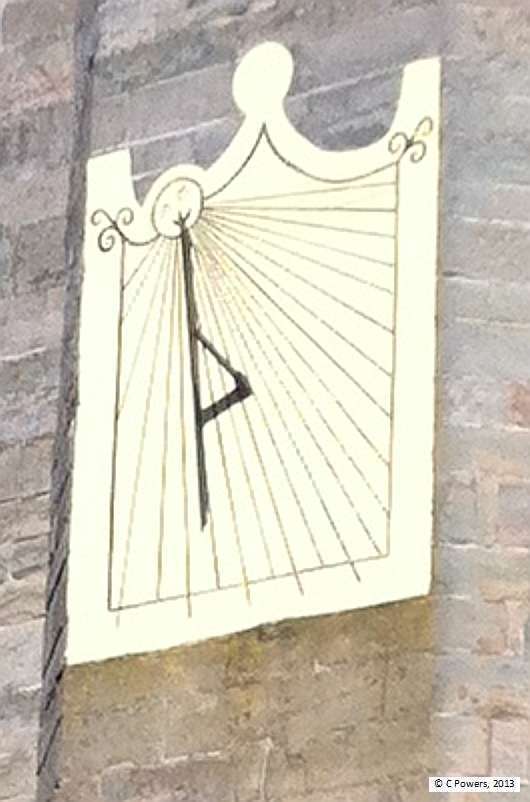
Then and Now...
Sundials as they once were and as they are now
Here is a page where, as time goes by, we shall look at some of the sundials of the British Isles as they were some time ago and as they are now. We shall make particular comparison with some of the images in Henslow's work, Ye Sundial Booke of 1914. To show necessary detail some of these images are of medium size. Please be patient whilst they load.
I - Warwick Castle
To start things off let us look at the Vertical sundial at Warwick Castle. The dial is SRN 020 in the National Register, a vertical West declining dial set on the inside of the entrance tower of the Castle. One might be forgiven for thinking that today's dial (see the image on the far right) is a poor copy of the original since it has no numerals and it appears unfinished to today's eyes. Yet intriguingly this dial may never have had numerals; D Hartley's drawing of 1912 shows a remarkably similar layout even though the dialplate has clearly been repainted - possibly more than once since. The dial is located at Lat/Long: 52.279908,-1.584564.
 |
 |
II - The Countess's Pillar
Another very old dial is the Countess's Pillar in Cumbria. It too is one that
has hardly changed in the past hundred years as can be seen in the lovely comparison
below. The drawing on the left is by D Hartley made in or around 1912 and the
image on the right is one taken by BSS President Christopher Daniel during a
restoration visit with English Heritage in the 1980s. The monument was
originally erected in 1656 by
Lady Anne Clifford of nearby Brougham Castle, to commemorate her final parting
there from her mother in 1654. On the low stone beside it, money was thereafter
given to the poor upon each anniversary of their parting. That fund is separately
identified in the Local Council's accounts to this day. Christopher Daniel
provided advice for the design of the direct south gnomon and for the half hour
markings.
The dial is located at Lat/Long: 54.653662,-2.704925
|
|
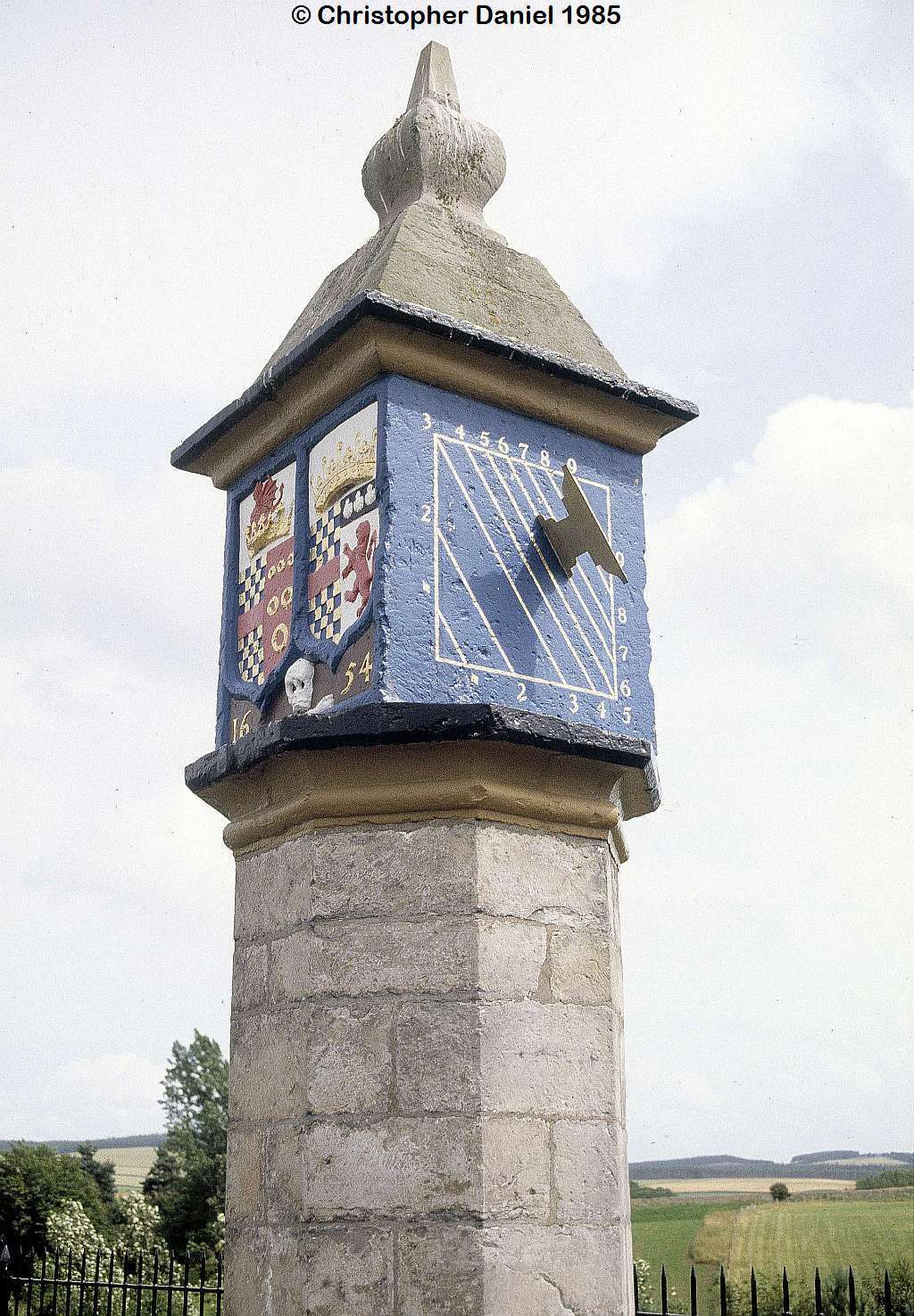 |
III - The Old Grammar School, Rye
The dial that was originally on the Old Grammar School in the High Street in the town of Rye (drawing believed to be by D Hartley and made in or around 1912) has survived the move to its present location on the Town Hall. Dated 1831 in a cartouche at the top, the two mottoes read (at the top) Tempus edax rerum and on a lower panel The Solar Shadow as it measures Life resembles (it) too. A figure of a man (possibly intended to be of Time) in the centre of the dial has now largely eroded and the setting is now rather shaded by other buildings but thankfully it is still there for all to see.
 |
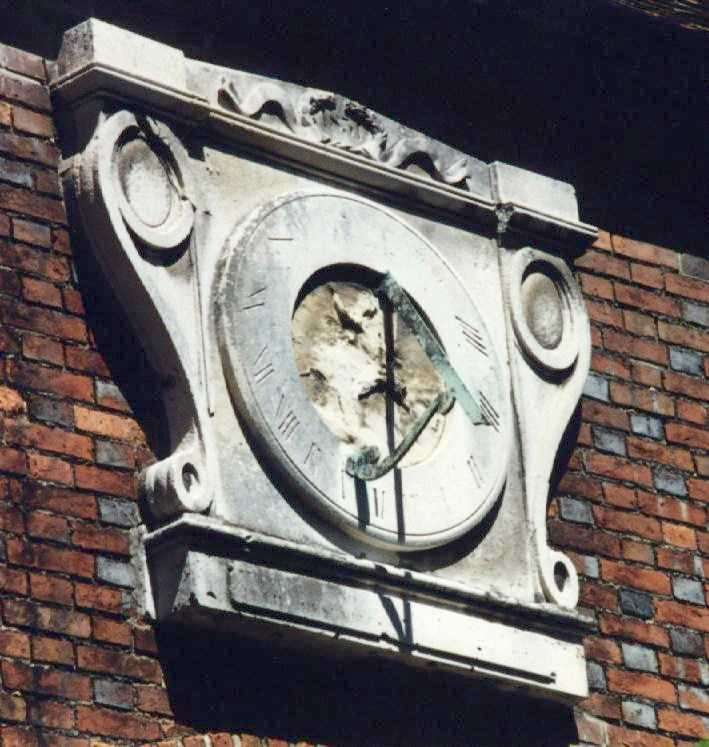 |
IV - The Pilkington Gibbs Dial at Thornton Manor, home of the first Lord Leverhulme
Lord Leverhulme was the founder of the Lever Brothers Soap empire and the developer of Port Sunlight. He first rented and then, in 1893 he purchased, Thornton Manor. He extended both the house and the gardens over the next 20-25 years and held many events there both for his workers and the public. The photographs show an unusual sundial, a Pilkington and Gibbs Heliochronometer mounted under its protective glass bell jar. The first picture was taken sometime after 1907, not long after this dial type had been invented. By kind courtesy of Mike Shaw, a second picture shows it in the present day. Its motto reads: "He writes nothing who is never read". Fitted with its glass bell jar. it is a Mark 2, Type2 Standard model, serial number #536 which was restored by G Aldred in 1995. The Pilkington Gibbs design will show clock time with considerable accuracy, it is adjustable for latitude between 38 and 60 degs and it shows time from 5am to 7pm in 2 min intervals.
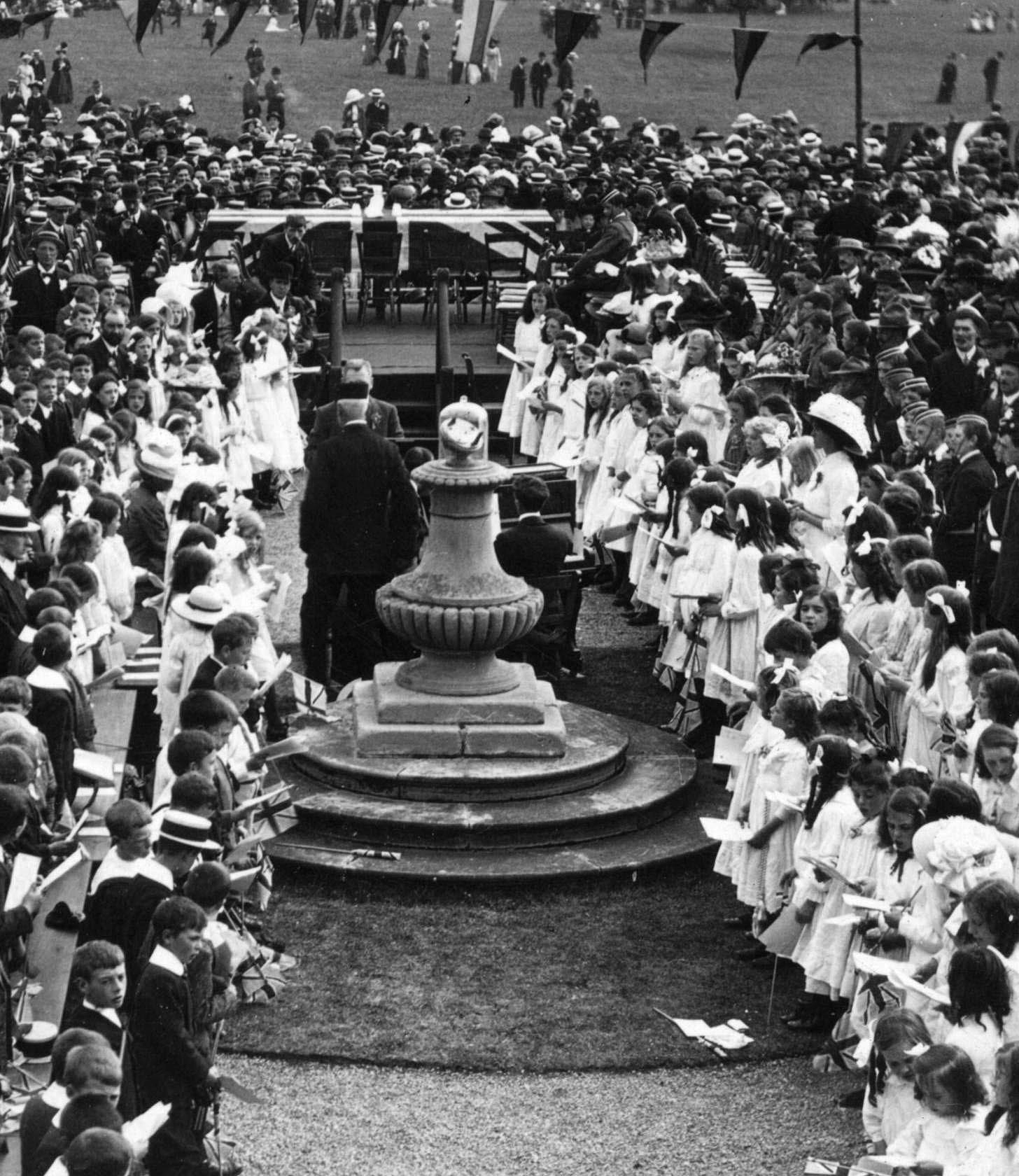 |
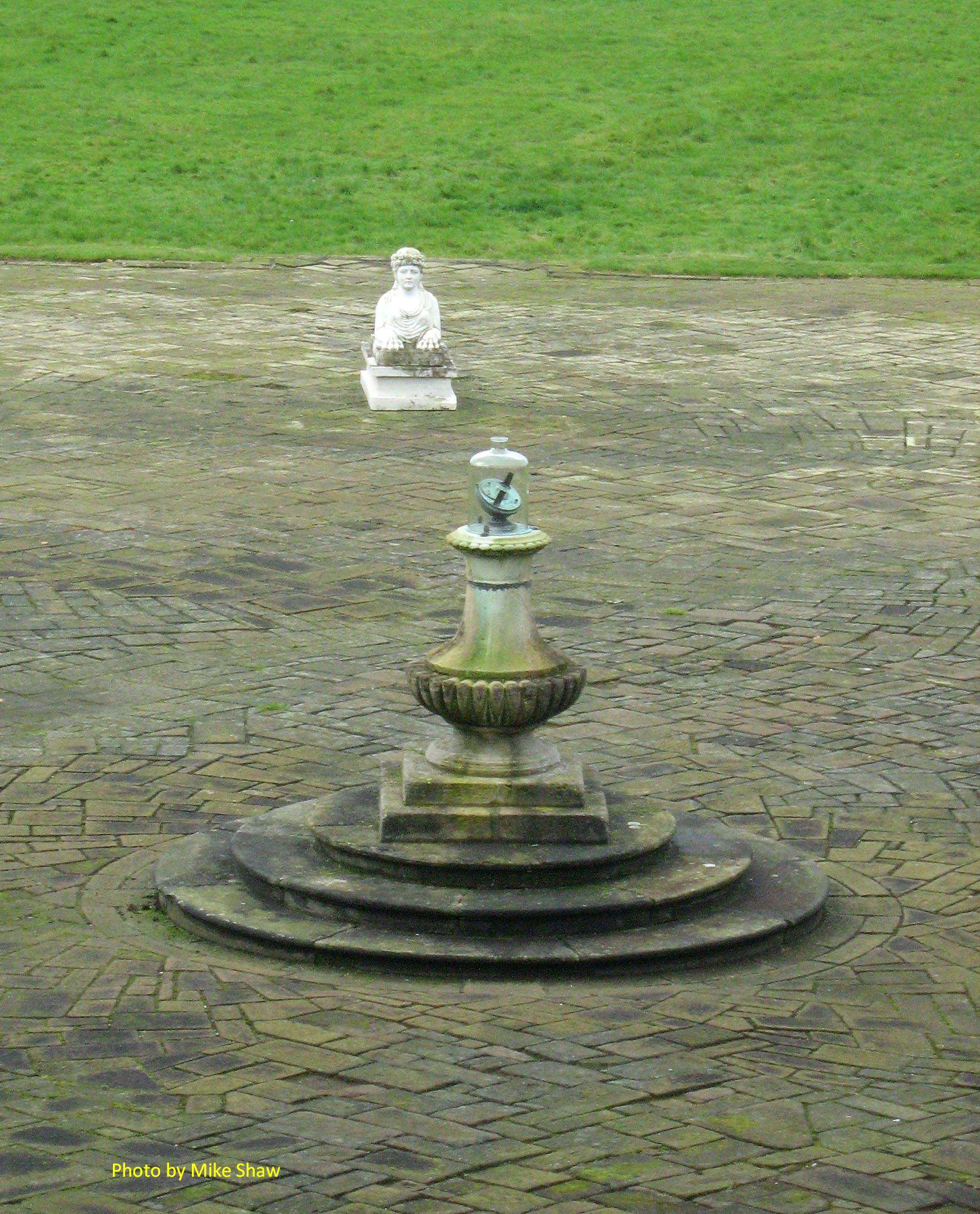 |
[Back]
09/10/2014